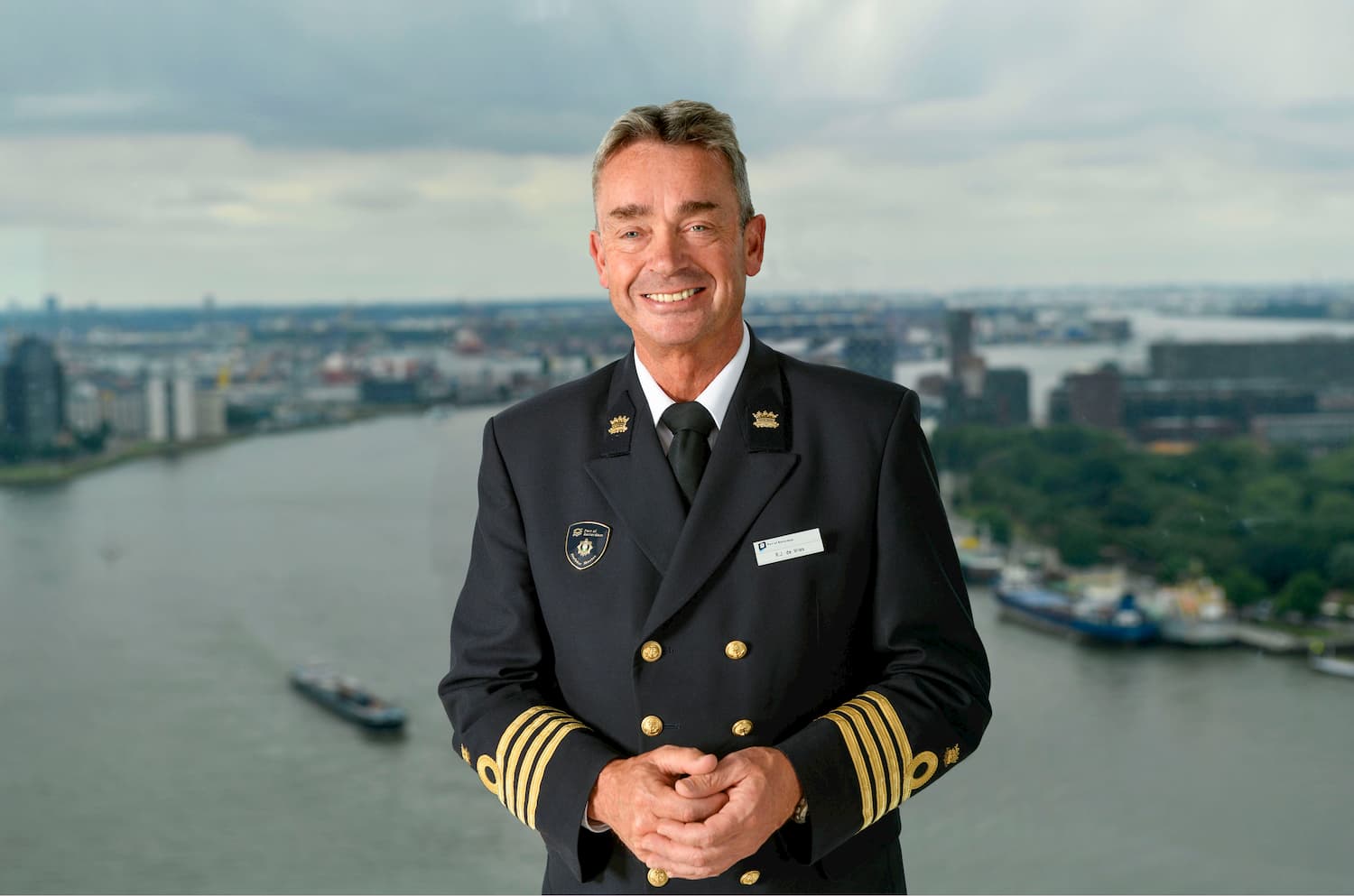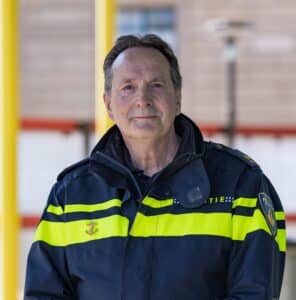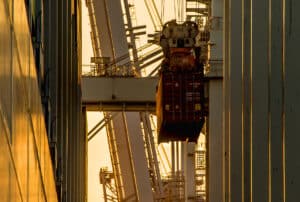“Undermining is a multi-headed monster. And thanks to the Secure Chain, one of those heads has now been cut off.” As (State) Harbour Master of Rotterdam, René de Vries notes that the new, secure and reliable approach to releasing containers has put an end to the issue of PIN code fraud. “The Secure Chain helps to make the port more resilient.”
A few years ago, PIN code fraud was a frequent occurrence in the port, recalls De Vries. “The ‘P’ in PIN code stands for personal, but there was nothing personal about the codes anymore.” They were widely shared. ‘Anyone’ who wanted to could access them. The introduction of the Secure Chain put an end to this. The use of validated data and controlled information sharing has helped establish trust in the chain.”
Participation shortsea next step
Now that the implementation of the Secure Chain for incoming deepsea traffic has almost been completed, De Vries sees shortsea shipping as the logical next focal point. During a recent meeting for companies in the Waalhaven/Eemhaven port area together with Customs and the Seaport Police, he emphasised the importance of this sector’s participation.
Shortsea companies recognise the need for action’
“I have the impression that shortsea companies are much more positive about this now than they were a few years ago. They recognise the need for action. A container from South America can first go to Le Havre and then to Rotterdam. That officially makes the origin ‘European,’ but ultimately it is still a high-risk container from South America.”
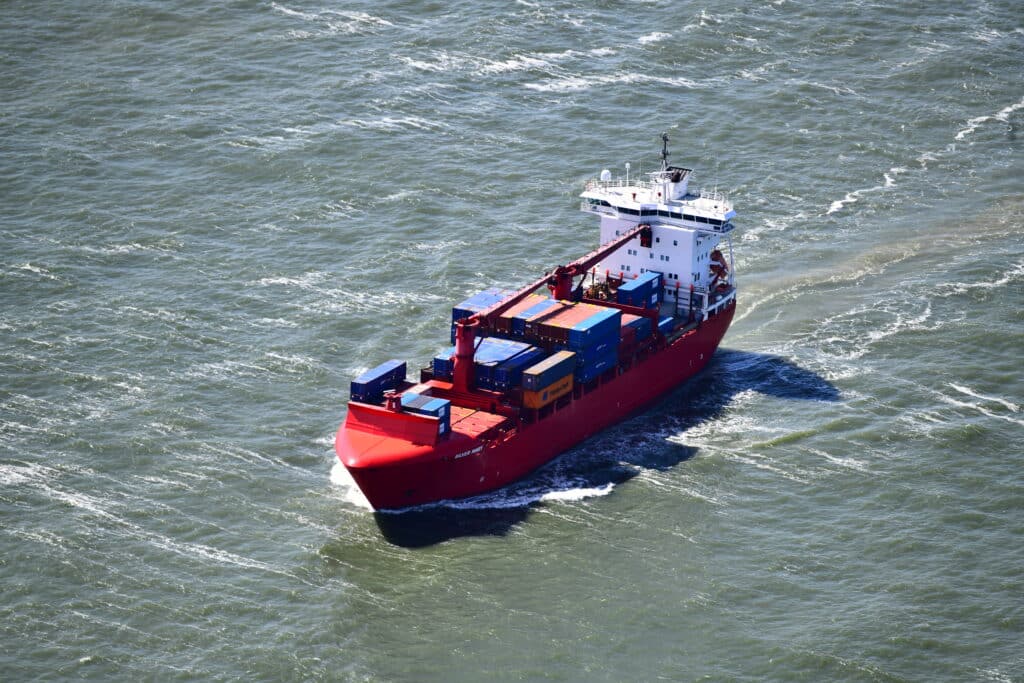
Port Security Act as a framework
De Vries frequently participates in these kinds of sessions with the business community. In other respects, his involvement with the Secure Chain is mostly indirect. The Port of Rotterdam Authority, together with the Seaport Police, Customs, the Municipality of Rotterdam, the Tax and Customs Administration, the Fiscal Information and Investigation Service (FIOD) and Deltalinqs, forms the Port Alliance Rotterdam. Using funding from the national government, various initiatives to combat undermining activities in the port have been launched. One of them is the Secure Chain.
“Furthermore, the mayor has appointed me as Port Security Officer. In this capacity, I am responsible for ensuring compliance with the Port Security Act. It is the Dutch implementation of the global ISPS Code (International Ship and Port Facility Security Code). This code was established after the attacks in the USA on September 11, 2001. Within the framework of the act, we assess whether the security measures taken by the approximately 190 terminals in Rotterdam and surrounding municipalities that handle seagoing vessels meet the requirements of the ISPS Code.” The Secure Chain also fits within this framework. “Anyone who attempts to illegally collect a container from a terminal is in breach of the Port Security Act.”
Close cooperation
The Harbour Master’s Division of the Port of Rotterdam Authority collaborates with the Seaport Police and Customs in many areas. From enforcing the ISPS Code to monitoring recreational boating, as De Vries puts it. One example of successful collaboration is the maritime virtual fence, a smart camera system at the Maasvlakte. “In total, some 300 cameras are spread across the landside and the waterside. The Seaport Police, Customs and Port of Rotterdam Authority can each operate these cameras from their own locations.” Among other things, the cameras use smart software to help detect small boats in the evening and at night. “We’re trying to make things increasingly more difficult for criminals.”
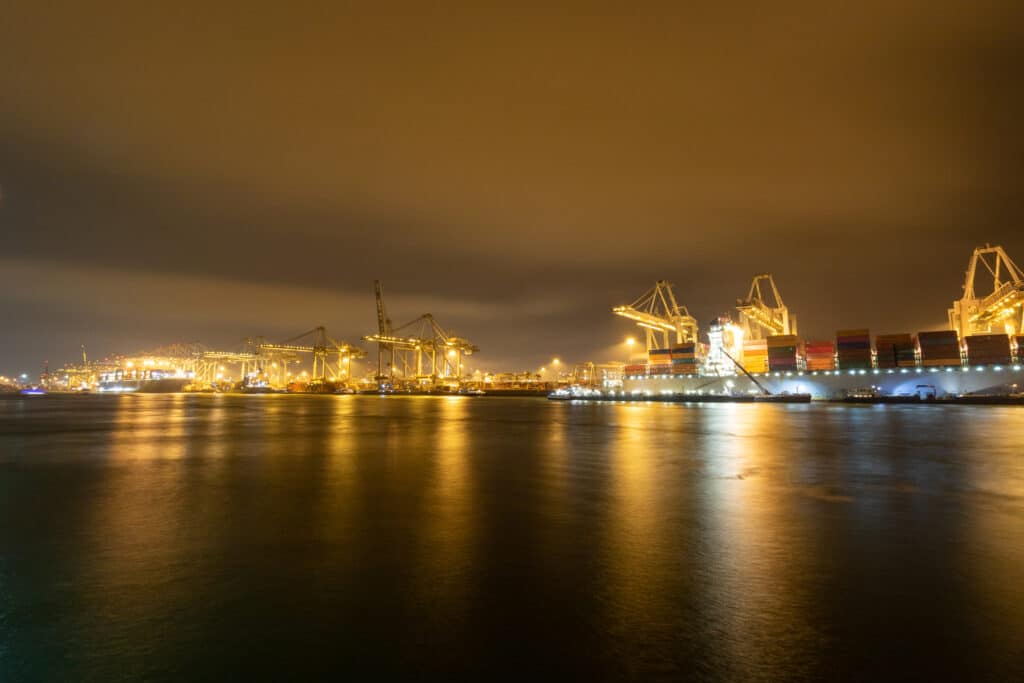
Beyond ports and borders
Working together on security takes many forms. “For about five years now, we’ve also been regularly consulting with the other major container ports in Northwest Europe, Antwerp and Hamburg. This is because the ISPS Code is rather abstract and for example mentions adequate security measures. But what does this mean exactly?
To promote a level playing field, the three ports jointly published a booklet outlining their shared view on security measures – for example, regarding fencing requirements around terminals.”
‘Remain vigilant against all forms of undermining. Be sure to participate in all relevant initiatives, such as the Secure Chain’
In the FERM program, which was launched in Rotterdam and has now been implemented across the country, all Dutch ports collaborate on cyber resilience. De Vries: “As part of this, we conduct a drill each year. In this CyberNautics exercise, we simulate various scenarios of cyberattacks. How do we respond? For all participants, it’s always an eye-opening moment that prompts action within their own organisations.”
Be alert!
“My appeal to the port business community is to always remain vigilant,” concludes De Vries. “Be alert to all forms of undermining. Check your staff, check your procedures, check your systems. Also be sure to participate in all relevant initiatives, such as the Secure Chain. The world is not a friendly place right now and things are not likely to improve anytime soon.”
